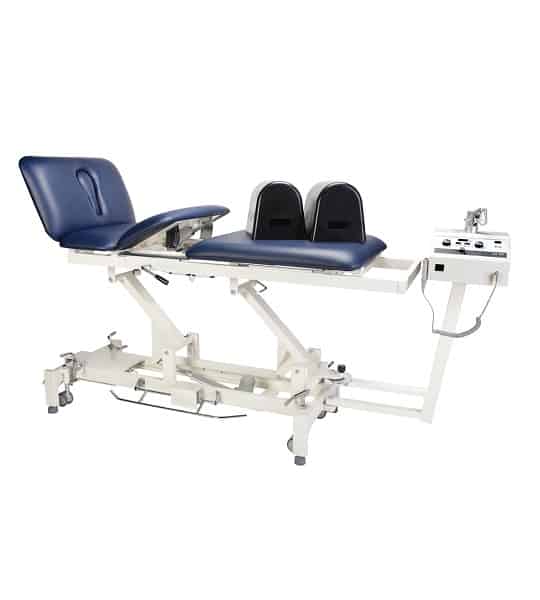What Is A Bulged Disc?
The disc is the cushioning between two vertebrae or bones in the spine. The disc is composed of an outer layer called the Annulus. This is the tough, multi-layered casing which keeps the soft inner portion, called the Nucleus Propulsus, in place. This part of the disc is the main portion responsible for shock absorption in the spine as well as the mobility between vertebrae. As people get older the discs can lose their height which is why people get shorter in their latter years. Sometimes if a disc is stressed too much from repeated activities, it can start to push out the back or the sides. This is what is known as a bulging disc. If the bulge continues to get worse but the outer layer stays intact, it is considered to be herniated. If the outer layer breaks, it’s what’s known as an extrusion.
Is A Bulged Disc Painful?
Sometimes, a bulged disc can be painful on its own. It can cause localized neck or low back pain that makes it difficult to bend the spine forwards towards your chest or toes respectively. This, in turn, can lead to shortened painful muscles that surround that particular bulge. Other times, if the bulge is bad enough, it can push directly on a nerve or the spinal cord itself. Under these conditions, symptoms will usually go down the arm(s) if the bulge is in the neck or down the leg(s) if the bulge is the the Lumbar spine. While it can happen, a bulged disc in the middle of the back, known as the Thoracic spine, is relatively rare.
Can decompression therapy help me with my bulged disc?
Decompression or traction, can be a great solution for someone that has a bulged disc in their neck or low back. This is a gentle, conservative way to get the disc to reduce to its normal position without anything unnatural such as medications, injections or surgery.

What Are Symptoms Of A Bulged Disc?
Symptoms of a bulged disc vary depending on time and severity of the bulge itself. The progression can begin with some mild spinal pain and restricted movement in that part of the spine. Mobility restrictions can be either gradual or sudden. As the mobility of the spine is reduced, symptoms tend to increase. Sometimes pain will begin to travel down the arm or leg and may go down into the fingers or toes. In extreme cases, there may be signs of muscle atrophy or weakness of that particular limb. These are not symptoms to take lightly and if they are to that point, a medical professional should be contacted immediately.
What Can I Do About A Bulged Disc?
Many people will seek the help of a physician for treatment of a bulged disc. Most of the time, anti inflammatories, steroids or muscle relaxants are prescribed. The problem with that strategy is that the bulge remains active, the symptoms are just temporarily masked. It is for this reason, many people who receive medications do not necessarily get better since the bulge still remains.
Surgery is a possibility for some people depending on the size of the disc bulge. People do get relief sometimes from surgery, although it is never a guarantee. There are risks associated with surgery such as: infection, short/long term increase in pain, a weakening of the disc, extended time off of work. There is major up AND downside to this type of surgery which is why so many people decide to go the conservative route with their care.
Decompression or traction, can be a great solution for someone that has a bulged disc in their neck or low back. This is a gentle, conservative way to get the disc to reduce to its normal position without anything unnatural such as medications, injections or surgery.
What Is Decompression Therapy?
Cervical or Lumbar traction involves gently stretching the spine along its axis to create negative pressure within the disc itself. Decompression is achieved by laying down in a comfortable position and connecting either a harness to the hips for low back pain or resting the head on a device that gently pulls on the base of the skull. This helps the bulge reduce and thereby decrease pain that is in the extremities and the spine itself.
Does Decompression Hurt?
Decompression can give you the relief you are looking for but can’t achieve by yourself. A decompression system is set up based on the individual patient’s measurements and gently pulls on their spine. While the decompression is running, many people report that the treatment takes the pain out of their limbs and spine and gives them relief. Once enough sessions have been completed, that relief carries over into the following days/weeks/months/years.
Is Decompression A Permanent Solution To My Disc Bulge?
Decompression can be a long term solution to a bulging disc. Factors such as lifestyle can play a huge part in the patient’s success. If there are long durations of sitting or repeated bouts of bending over, there can be a higher risk for a disc to bulge again in the future. Maintaining good core stabilization is critical along with using proper body mechanics of one is to bend over or pick up a heavy object.
Will My Insurance Cover Decompression Therapy?
Many insurance companies will pay for a licensed physical therapist to administer decompression for a bulged disc. Traction is an incredibly effective way to conservatively manage debilitating neck or low back pain that is caused by a bulged disc.
How Can I Learn More About Whether Decompression Therapy Is Right For My Condition?
Scheduling an appointment with one of our qualified physical therapists is a great start. They will do a full musculoskeletal assessment and based on their findings recommend treatment for decompression if they think it is appropriate. If you think you would benefit from decompression give us a call at (479) 268-6040.
